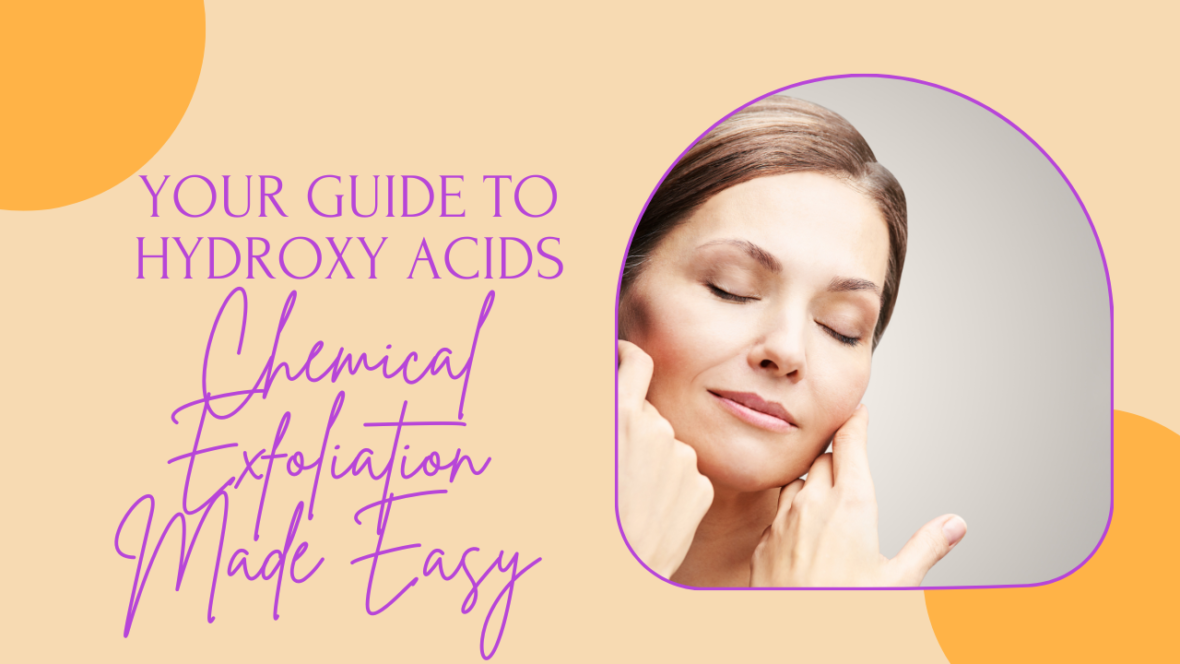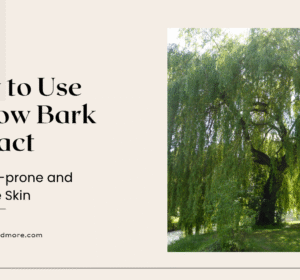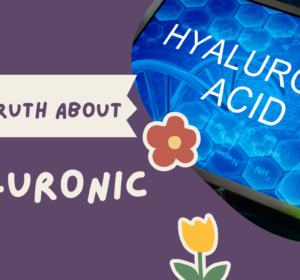In the quest for radiant, youthful skin, exfoliation reigns supreme. While physical scrubs can be harsh, chemical exfoliation with hydroxy acids (AHAs, BHAs, and PHAs) offers a gentler, more targeted approach. But with an extensive range of products and scientific-sounding names, navigating the world of hydroxy acids can feel daunting. Fear not, beauty enthusiasts! This comprehensive guide, packed with SEO-friendly keywords, will transform you from a hydroxy acid novice to a confident skincare pro.
Updated. Originally posted 20 Dec 2020.
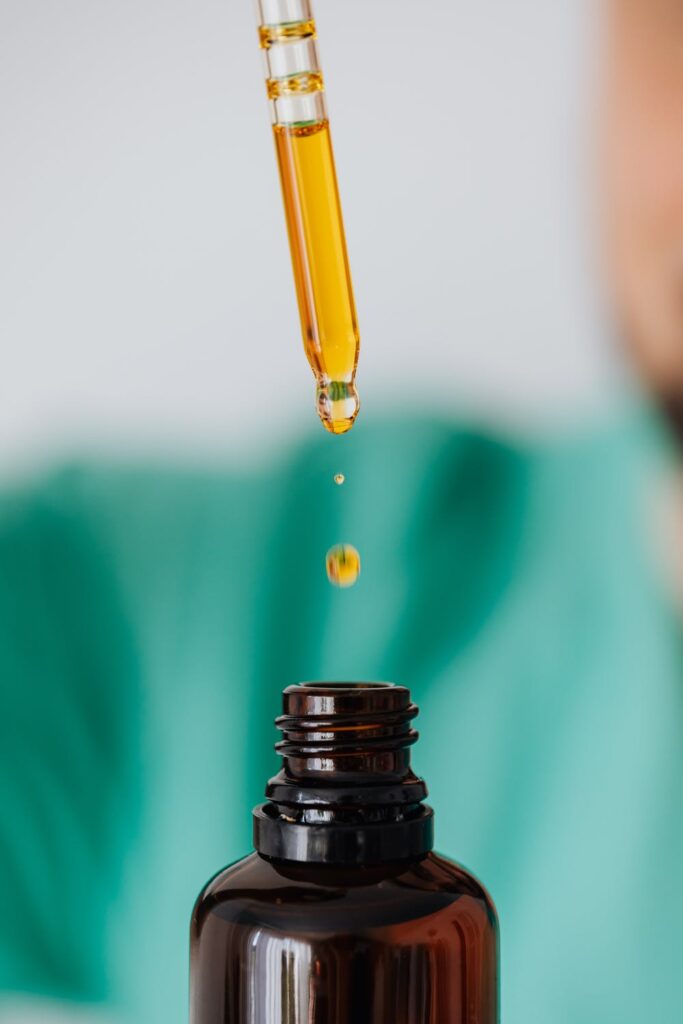
What are hydroxy acids?
Hydroxy acids are a group of natural or synthetic acids used in skincare products for chemical exfoliation. They work by dissolving the glue-like substance that holds dead skin cells together, allowing them to be easily removed. This process reveals fresher, brighter, and smoother skin cells underneath.
Hydroxy acids, from a chemical perspective, are organic acids containing a hydroxyl group (OH) attached to a carbon chain. This specific hydroxyl group gives them their exfoliating properties. Depending on the position of this OH group within the carbon chain, hydroxy acids are classified into three main categories:
Alpha Hydroxy Acids (AHAs): In AHAs, the OH group is located on the first carbon atom next to the carbonyl group (C=O). Examples include glycolic acid, lactic acid, and mandelic acid.
Beta Hydroxy Acids (BHAs): Here, the OH group is situated on the second carbon atom after the carbonyl group. Salicylic acid, the most common BHA, exemplifies this structure.
Polyhydroxy Acids (PHAs): These are larger molecules with multiple hydroxyl groups scattered throughout their structure. This larger size makes them gentler on the skin compared to AHAs and BHAs. Gluconolactone is a prominent example of a PHA.
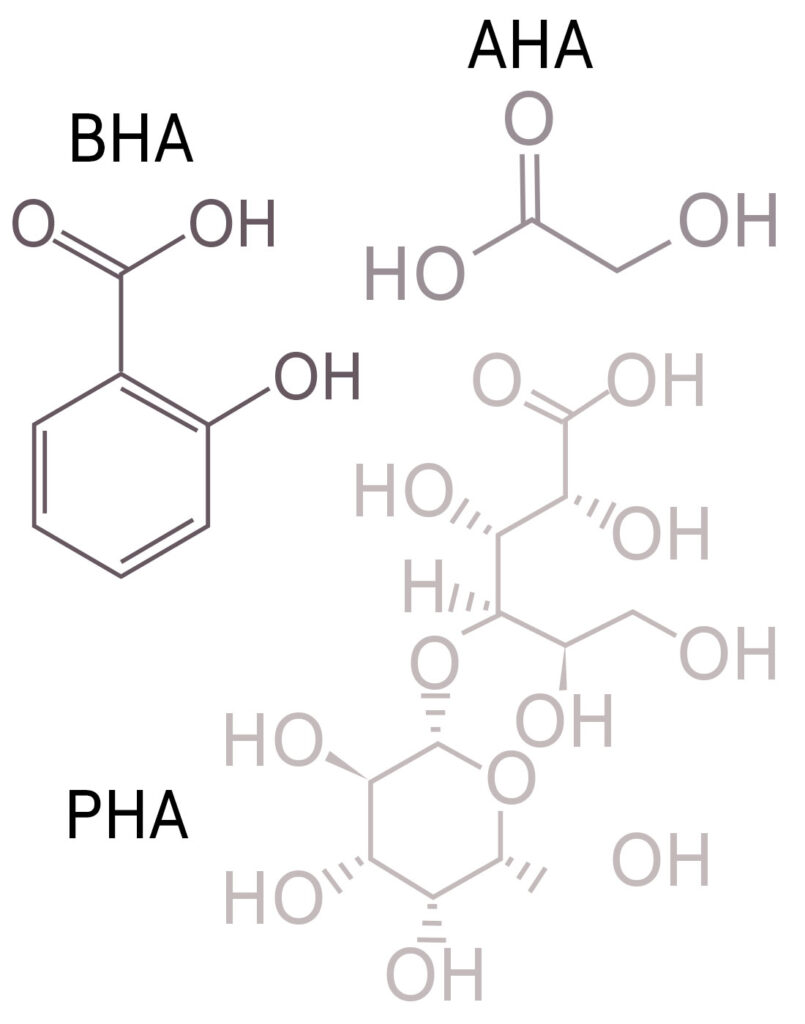
The magic of these acids lies in their ability to disrupt the bonds between dead skin cells. These bonds are often corneocytes, protein-rich structures that hold the outermost layer of your skin (stratum corneum) together. Hydroxy acids promote the shedding of dead skin cells by weakening these bonds with their acidic properties, revealing the newer, healthier cells beneath. This process leads to the various benefits associated with hydroxy acids in skincare, including smoother texture, improved brightness, and reduced hyperpigmentation.
Why Hydroxy Acids? The Science Behind the Glow
Hydroxy acids, naturally derived from plants or fruits, are organic acids that work wonders on your skin. Here’s how:
Exfoliation Powerhouse: They gently dissolve the “glue” holding dead skin cells together, promoting their removal. This reveals the smoother, brighter layers beneath, resulting in a more radiant complexion.
Enhanced Cell Turnover: As we age, cell turnover slows down, leading to dullness and uneven texture. Hydroxy acids stimulate this process, encouraging the production of fresh, healthy skin cells.
Fine Line Fighter: By diminishing the appearance of dead skin cell buildup, hydroxy acids minimize the visibility of fine lines and wrinkles, leaving you with a smoother, younger-looking canvas.
Hyperpigmentation Hero: Struggling with dark spots or an uneven skin tone? Hydroxy acids can help! They work by targeting melanin production, gradually fading hyperpigmentation, and promoting a more even complexion.
Hydration Boost (for AHAs): Certain AHAs, like lactic acid, possess humectant properties, attracting and retaining moisture in the skin, keeping it plump and hydrated.
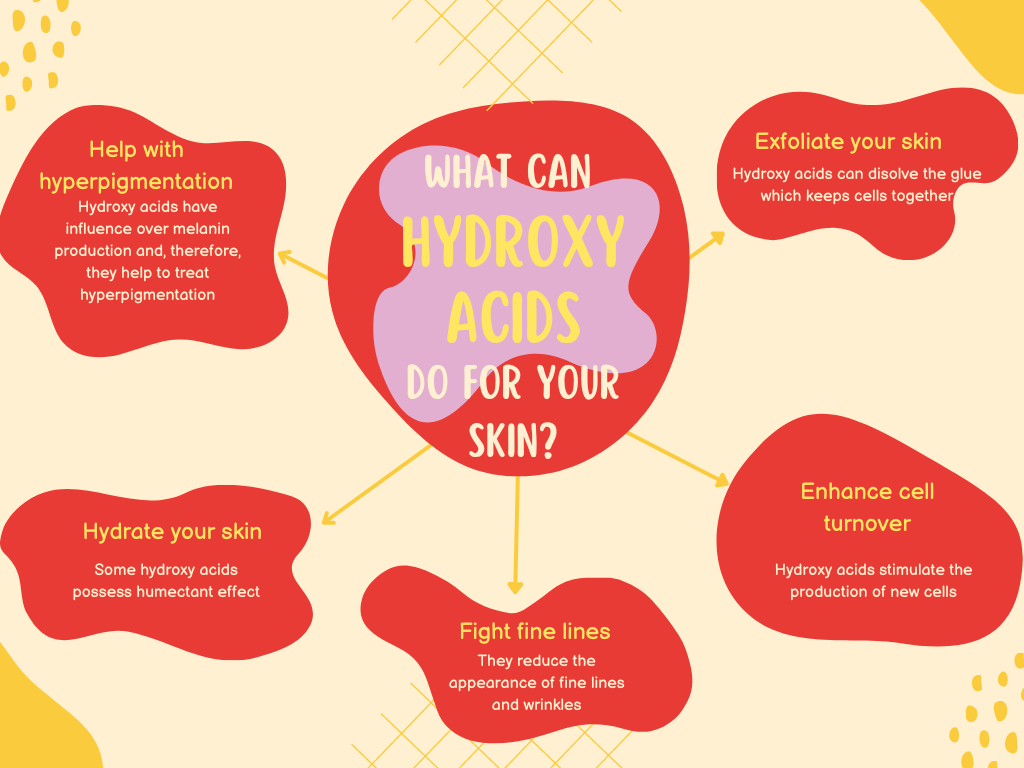
A Deep Dive into the Hydroxy Acid Family
Not all hydroxy acids are created equal. Let’s delve into the three main types and their unique benefits:
Alpha Hydroxy Acids (AHAs): Soluble in water, AHAs work on the skin’s surface, gently dissolving dead skin cells. Popular AHAs include:
Glycolic Acid: Derived from sugar cane, it’s the most potent AHA, offering deep exfoliation for smoother, brighter skin. (Remember, start with a lower concentration and gradually increase!)
Lactic Acid: Produced through milk fermentation, lactic acid is a gentler AHA ideal for sensitive skin. It also helps reduce hyperpigmentation.
Mandelic Acid: Extracted from almonds, mandelic acid is a larger molecule, making it even gentler than lactic acid. It’s perfect for sensitive and acne-prone skin.
Beta Hydroxy Acids (BHAs): Unlike AHAs, BHAs are oil-soluble, allowing them to penetrate deeper and unclog pores. They’re ideal for oily and acne-prone skin.
Salicylic Acid: The star BHA, salicylic acid, is a potent ingredient that dissolves sebum (oil) buildup within pores, preventing breakouts and promoting clearer skin.
Polyhydroxy Acids (PHAs): The gentlest of the bunch, PHAs are large molecules that work on the skin’s surface. They’re perfect for those with sensitive skin who want to experience the benefits of hydroxy acids without irritation.
Gluconolactone: Derived from sugar, gluconolactone offers mild exfoliation while also boasting antioxidant and moisturizing properties.
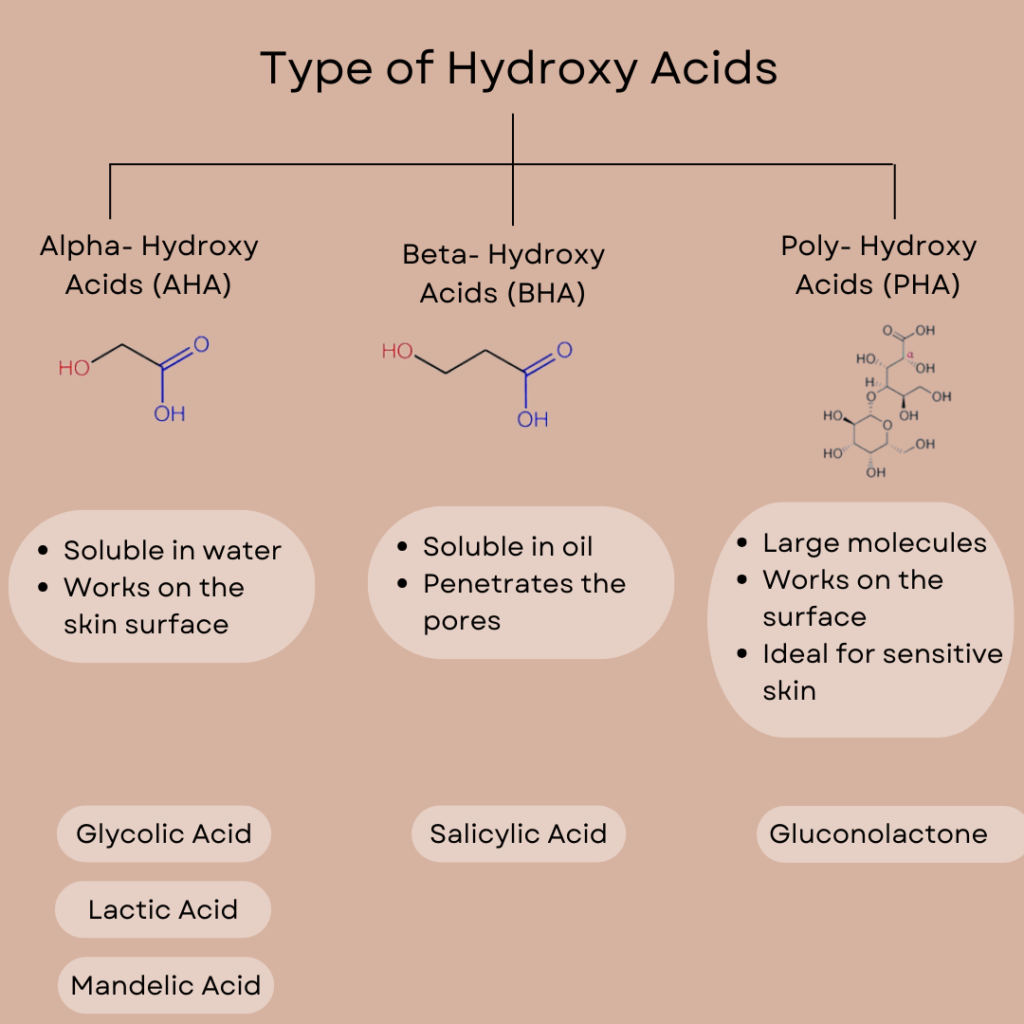
Unlocking the Power of Hydroxy Acids: A Step-by-Step Guide
Ready to incorporate hydroxy acids into your skincare routine? Here’s how to do it safely and effectively:
Know Your Skin: Different hydroxy acids address various concerns. Consider your skin type (dry, oily, sensitive, etc.) and desired results (exfoliation, anti-ageing, acne control) when choosing an acid.
Start Low and Slow: New to hydroxy acids? Begin with a low concentration (e.g., 5% AHA or 2% BHA) and use it once or twice a week. Gradually increase frequency and concentration as your skin tolerates it.
Patch Test is Key: Before applying any new product, especially one containing hydroxy acids, perform a patch test on a small area of your inner arm. Watch for irritation for 24 hours. If any redness, itching, or burning occurs, discontinue use.
Nighttime Application is Best: Most hydroxy acids can increase sun sensitivity. Apply them at night and religiously wear sunscreen with SPF 30 or higher every day, even on cloudy days.
Listen to Your Skin: Pay close attention to how your skin reacts. If you experience irritation, reduce frequency or concentration, or stop using the product altogether.
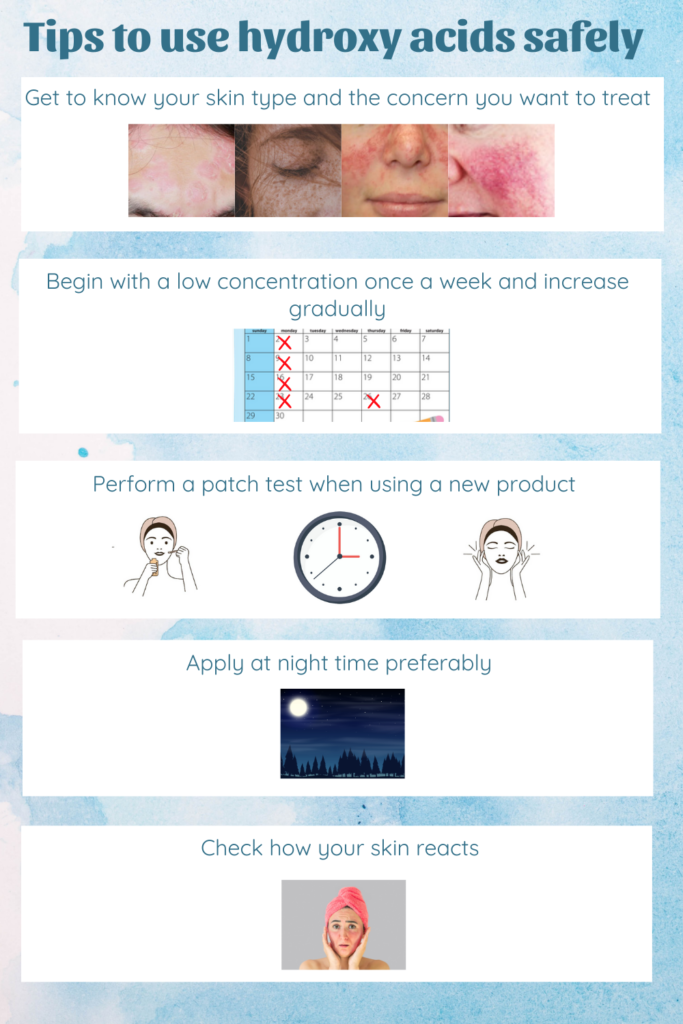
Beyond the Basics: Pro Tips for Maximum Results
There are a few tips I can give you to get the maximum results from the hydroxy acids:
Hydration is Key: Exfoliation can sometimes dry out the skin, so keeping proper hydration is crucial. Use a hyaluronic acid serum or moisturizer to replenish moisture levels.
Layering Like a Pro: Once your skin adjusts to hydroxy acids, you can layer them with other skincare heroes. For instance, apply a hydrating serum after your AHA for a plumping effect.
Consult a Dermatologist: If you have any concerns about incorporating hydroxy acids into your routine, especially if you have sensitive skin or pre-existing skin conditions, consult a dermatologist for personalized advice.
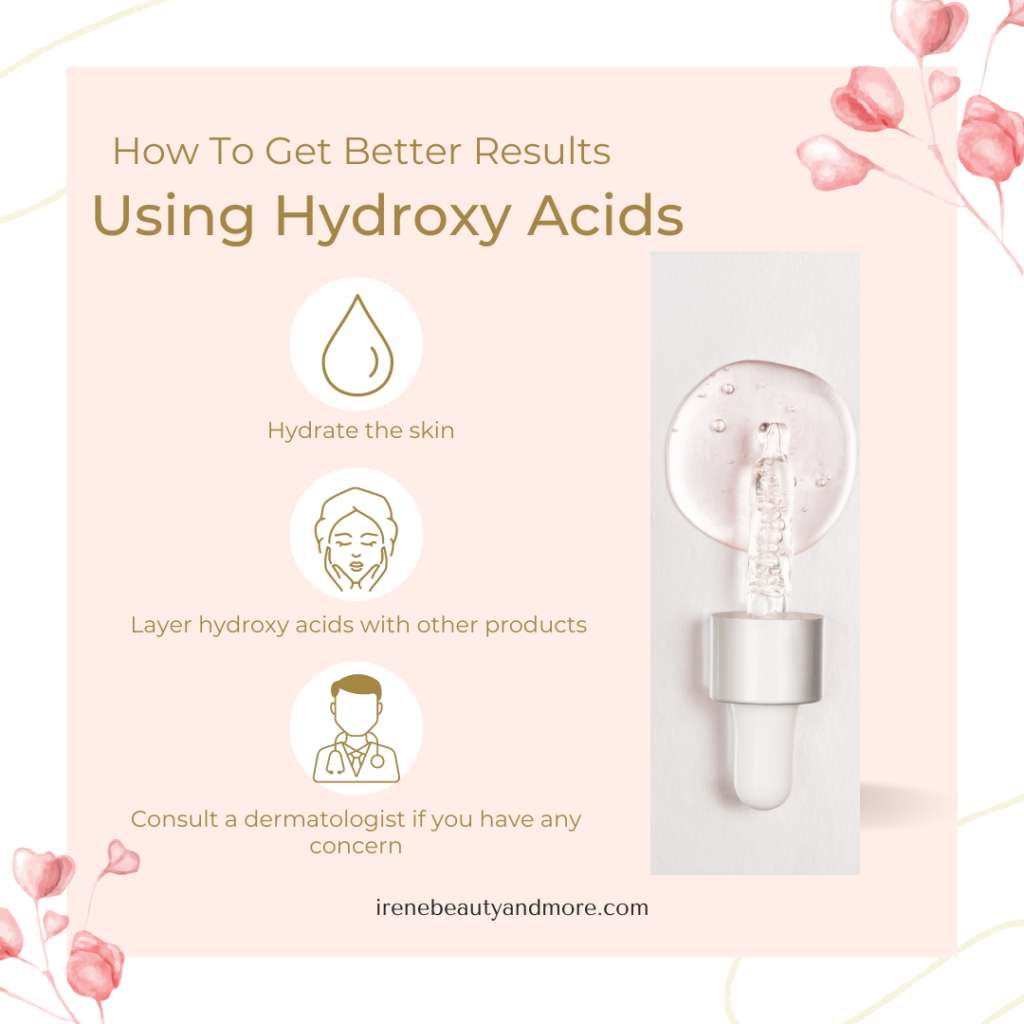
My Favourite Hydroxy Acids Products
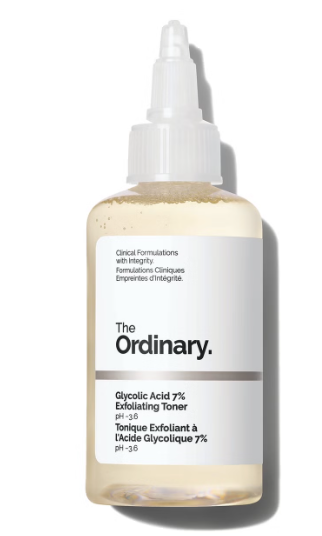
The Ordinary – The Ordinary Glycolic Acid 7% Exfoliating Toner
This toner buffs away dead skin cells and impurities, encouraging a smooth, luminous look.
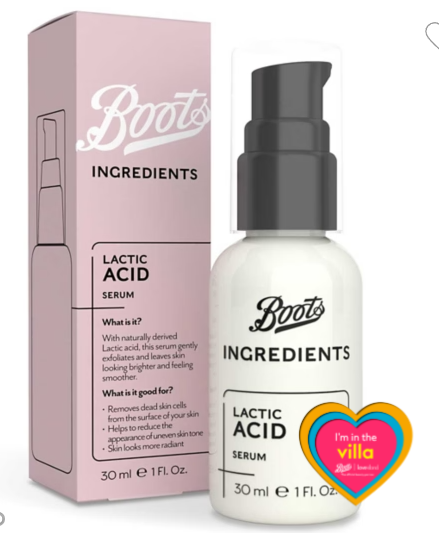
Boots Ingredients – Lactic Acid Serum
Boots Ingredients Lactic Acid Serum 30ml is formulated with naturally derived lactic acid to gently exfoliate, leaving your skin with a healthy glow and a smoother texture. By effectively removing dead skin cells, it helps to reduce uneven skin tone, resulting in a more radiant complexion.

The Inkey List – Mandelic Acid Treatment
A gentle, yet powerful treatment that helps to significantly reduce hyperpigmentation and fade marks caused by blemishes or breakouts.
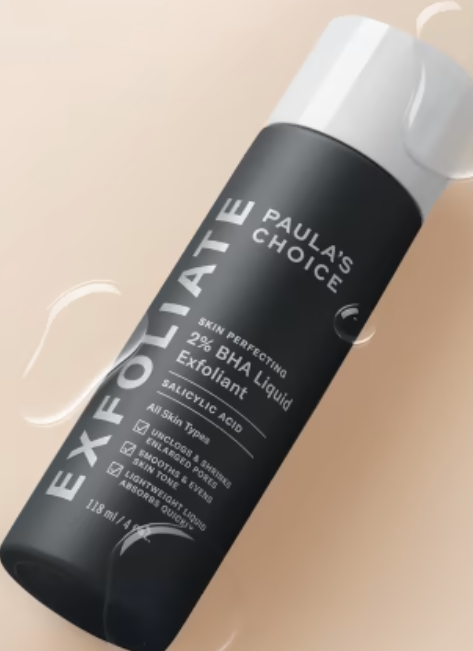
Paula’s Choice – 2% BHA Liquid Exfoliant
BHA (beta hydroxy acid) works within the pore lining where congestion, blemishes & blackheads begin. This daily leave-on exfoliant has an optimal pH range of 3.2–3.8 for maximum effectiveness without irritation.
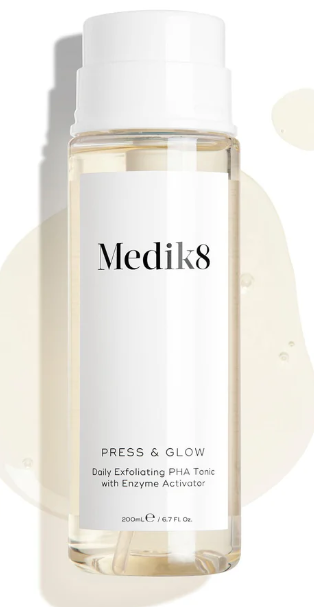
Medik8 – Press & Glow Daily Exfoliant PHA Tonic
Press & Glow gently removes dead surface skin cells to reveal a smoother skin texture with a noticeable everyday glow.
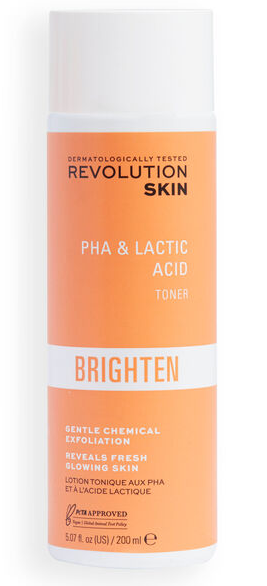
Revolution Skincare -PHA and Lactic Acid Gentle Toner
An ideal option for those who have sensitive, dry skin, this gentle, exfoliant toner helps deliver a healthy glow by lifting away dead skin cells.
Hydroxy acids are powerful allies in your quest for healthy, radiant skin. By understanding the different types, following these steps, and prioritizing gentle integration, you can unlock their transformative potential. Remember, consistency is key! With regular use, hydroxy acids can help you achieve a smoother, brighter, more youthful complexion. So, unleash the power of these skincare superheroes and watch your skin glow!


Bear in mind that some of the links in this post are affiliate links and if you go through them to make a purchase I will earn a commission. Keep in mind that I link these companies and their products because of their quality and not because of the commission I receive from your purchases. The decision is yours, and whether or not you decide to buy something is completely up to you.
